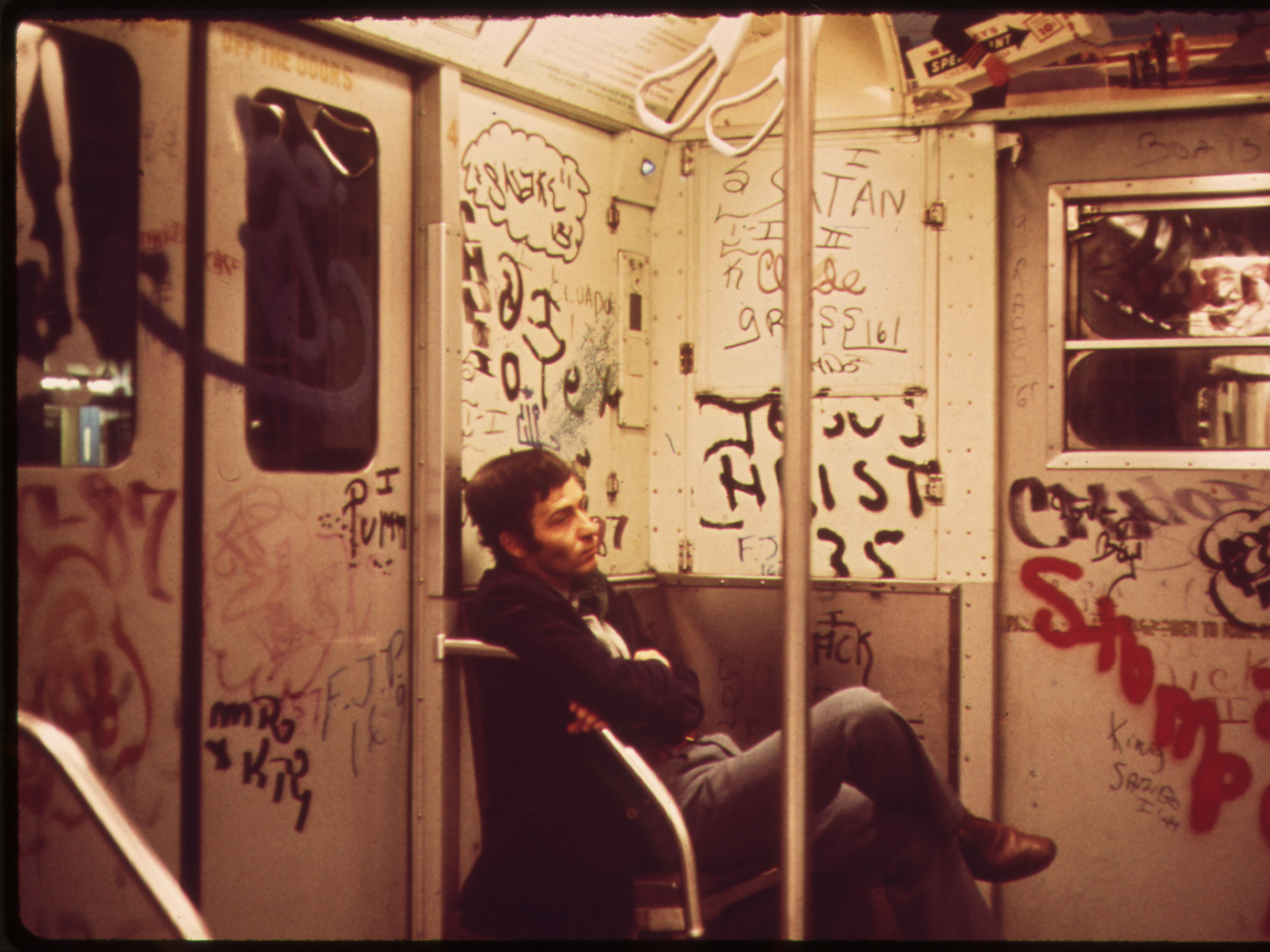The Big Apple seemed to be rotting from within during the 1970s.
Crime was everywhere and the city was struggling to deal with a major fiscal crisis.
The city’s subway system wasn’t faring much better. Crime, graffiti, and frequent mechanical breakdowns were mainstays of New York subways throughout the decade.
Photographer Erik Calonius snapped several shots of the bleak situation in April of 1973. These pictures, along with many others, can be viewed in the Flickr album of the U.S. National Archives
These 13 photos allow us a glimpse into what it was like to ride the New York City subway system during this troubled time.
A man backs away from the roar of a subway train in April of 1973.

Riding the subway in 1970 only cost 30 cents — a dramatic hike from the previous fare of 15 cents. Fare increases usually caused ridership to plunge.

Sources: New York Daily News, NYC Subway
The fares may have been cheaper, but the subways were also more dangerous back in the day. In December of 1977, an operation to combat rampant crime on subways resulted in the arrest of 200 robbery suspects.

Source: NYC Subway
In 1975, visitors at New York City's airports received pamphlets welcoming them to "Fear City." The skull-emblazoned documents advised tourists "not to take the subways under any circumstances."

Source: The Guardian
Robbery was so pervasive on the Lexington Avenue Express that is was nicknamed the "Mugger's Express."

Source: Business Insider
To discourage crime, the Transit Police closed the rear half of subway trains between 8 p.m. and 4 a.m. in order to make cars easier to monitor.

Sources: New York Daily News
Despite attempts to prevent crime, robberies and attacks persisted throughout the decade.

The 1970s were also the age of graffiti in the New York subway system. Modern day graffiti spread to New York from Philadelphia in the early 1970s.

Source: PBS Newshour
Trains completely covered in graffiti were called "masterpieces."

Source: New York Magazine
By tagging all five boroughs, graffiti writers could become known as "kings."

Source: New York Magazine
So many cars were spray-painted that New York City Mayor John Lindsay declared war on graffiti in 1972.

Source: New York Magazine
Throughout the decade, stagnating wages for transit workers and New York City's fiscal crisis caused the threat of transit strikes to loom over the subway system.

Source: NYC Subway
During the 1970s, annual ridership plummeted from 1.3 billion trips to around 1 billion trips — a drop double to that of the city's population drain.

Source: New York Post
Business Insider's Kamelia Angelova wrote a previous version of this article.

